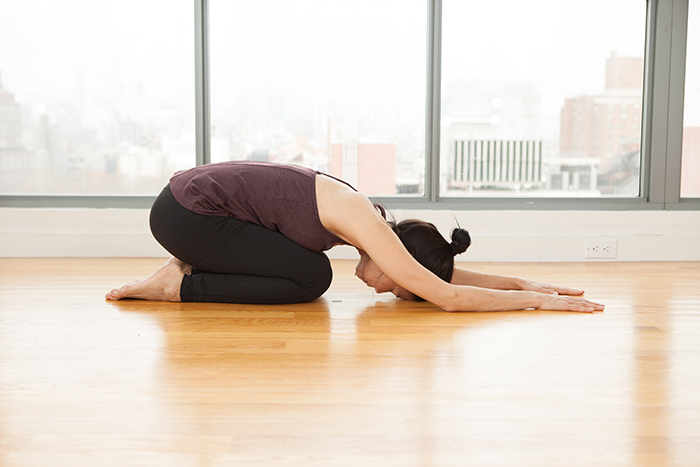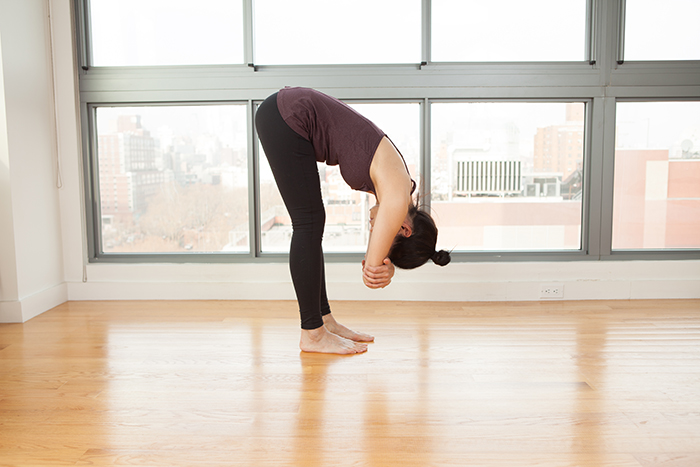According to The American Chiropractic Association, over 31 million Americans suffer from lower back pain. The causes of lower back pain vary, from minor injury resulting in a sprain back to chronic conditions such as arthritis or spinal stenosis. While it is difficult to determine the etiology of lower back pain, one thing is certain: it’s chronic and debilitating, with sufferers constantly aware that any sudden movement can cause spasms and other types of discomfort.
For those who understandably wish to avoid surgery, or for whom surgery isn’t an option, or who aren’t improving with physical therapy, yoga definitely should be considered.
Many of my clients suffer from lower back pain along with radiating leg pain and hip tightness. Some have scoliosis and/or arthritis, while others suffer from pain of unknown origin. Many have been evaluated by physicians, including neurosurgeons who have suggested back surgery in cases. Some have received physical therapy. Few, though, have seen significant decrease in pain and improved flexibility from these experiences. By contrast, with hands‐on, therapeutic yoga, most of my clients have experienced substantial pain reduction (if not elimination), and gained improved functionality.
When I begin working with a new client with back problems, first I gather some medical history so that I’m aware of any issues that might affect their yoga practice. In analyzing their individual situation, I draw upon my extensive experience with anatomy and physiology as a registered nurse, along with my specialized training as a yoga instructor certified in arthritis treatment. I observe how a client moves, walks and functions and ask about any physical limitations. Having determined the scope of what they can safely do at this point, I tailor a yoga routine that will target and increase flexibility in their lower back, hamstrings and calves.
Working with someone one‐to‐one, I am able to continuously assess their condition and progress, including determining which yoga poses are most beneficial, making adjustments, offering alternative poses to prevent injury, changing poses as their conditions improve. I also incorporate light massage where appropriate. Results often occur quickly. One client, for example, was using a standing desk at work because sitting was too painful. After our first session, he reported that he was able to sit for longer periods of time at work. Soon after, he was able to sit pain free both at work and on the train while commuting.
In private sessions, I am constantly reassessing which poses are most helpful, and attentive to helping the client enter into and leave them so that they’re lengthening and stretching muscles and ligaments, rather than further injuring them. Keeping in mind that yoga for back pain should be individualized; here are 3 beginning poses that often are helpful.
Cat‐cow pose begins in a table top position, shoulders aligned over the wrists and hips aligned over the knees. The client exhales and rounds their spine like a cat would when they stretch, freeing each vertebrae. The client is encouraged to move slowly and make the stretch as deep as comfortable as possible, then inhaling, curving the spine, moving the chest forward and forehead up. Cat‐cow can be repeated, each time monitoring the client’s slow and careful movements.
Child pose also is known as Balasana. The client starts in a kneeling position on a yoga mat, dropping their butt towards their heels (or as close to them as comfortable), stretching the rest of their body long and forward, letting their stomach relax and rest on their thighs. When their body is fully stretched, I have them lengthen both arms over their head, resting their forearms and forehead on the mat. I monitor that they are correctly stretching the full length of their spine. They should be breathing deeply and fully throughout; allowing 2‐3 breaths each time the pose is done.
Finally, there’s a simple forward bend called Uttanasana. The client stands with their feet hip width distance apart and slowly bends from their hips, letting their body come forward and their hands and arms hang down. Then, I have them hold onto both of their elbows and rock gently from side to side. With deliberate and easy side‐to‐side movements, they swing to each side, 3‐4 times in this pose. For clients with especially tight lower backs, I have them use yoga blocks to support their upper body when bending forward in this pose.
There are many yoga poses which can help lengthen and stretch the lower back. These 3 simple and basic ones usually begin the process of eliminating lower back pain.








